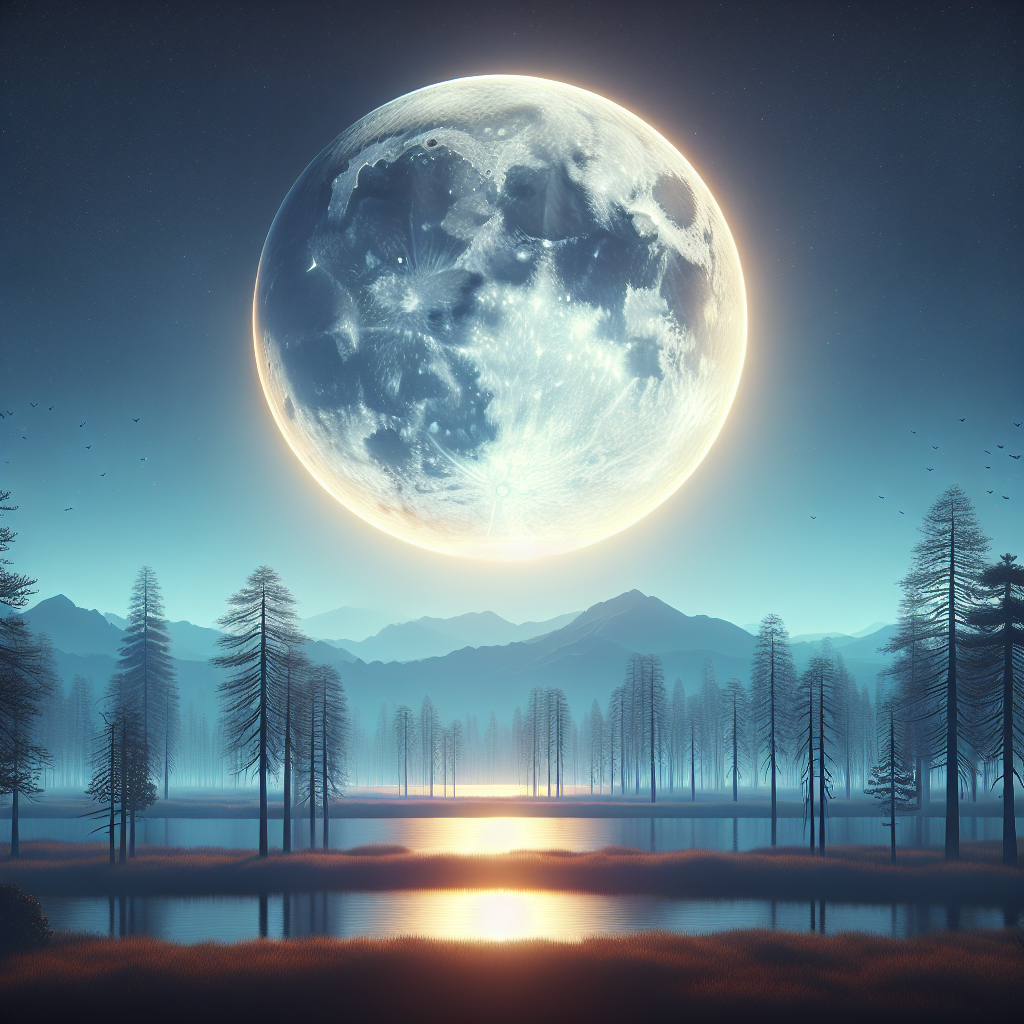
Understanding the Beaver Moon: A Celestial Spectacle of 2024
The night sky is set to dazzle with the final supermoon of 2024, the “Beaver Moon,” making its appearance on November 15 at 4:28 p.m. EST (2128 GMT). This celestial event marks the fourth consecutive supermoon of the year, following the Blue Moon in August, Harvest Moon in September, and Hunter’s Moon in October, promising a stunning finale for sky watchers.
What is the Beaver Moon?
The Beaver Moon gets its name from Native American traditions. November is when beavers build their winter dams, preparing for the colder months ahead. Early settlers also took this time to set traps before ponds froze, securing furs for winter. Other names for this full moon include the “Frost Moon,” indicating the start of freezing temperatures, and the “Deer Rutting Moon,” referencing the peak mating season for deer.
Why is This Supermoon Special?
This Beaver Moon is a supermoon, meaning it coincides with the moon’s closest approach to Earth in its orbit, known as perigee. As a result, the moon will appear larger and up to 30% brighter than usual, creating a captivating visual spectacle. This phenomenon, known as a supermoon, was popularized in 1979 and has since become a popular term in astronomy. The increase in size and brightness is most noticeable near the horizon, making it a must-see event.
Best Viewing Times
The Beaver Moon will look full from November 14 to 16. Peak visibility will be around 4:29 p.m. EST on November 15, but you can enjoy the sight of the full moon rising in the east at sunset and setting in the west at sunrise. In addition to the supermoon, viewers can also spot the Pleiades star cluster, often called the “Seven Sisters,” shining brightly in the Taurus constellation. Planets like Mercury, Venus, Jupiter, and Saturn will also be visible, making for a spectacular night of stargazing.
Viewing Tips
- For an optimal experience, find a location with a clear, unobstructed view of the sky.
- The supermoon effect is particularly striking when the moon is low on the horizon, enhancing the “moon illusion.”
- Binoculars or a telescope can provide an even closer look at its details.
- This rare chance to witness the final supermoon of 2024 is a perfect way to welcome the winter season and enjoy the beauty of the night sky.
The magnificence of the Beaver Moon is not just an astronomical phenomenon but also a cultural event that connects us to historical traditions and natural cycles. As you gaze at this luminous sphere, you’re participating in a shared human experience that resonates across time and space.
The Science Behind Supermoons
Understanding the scientific aspects of a supermoon helps appreciate why these events capture our fascination. The moon’s orbit around Earth is elliptical, leading to varying distances as it rotates. A supermoon occurs when a full moon aligns with the point of perigee, showcasing the moon at its most visually impactful due to its proximity.
Historical Significance
Supermoons have often been attributed to myths and legends, serving as omens or signs in various cultures. The energy emitted by a larger-than-usual full moon was believed to influence everything from tides to human emotions. While science explains these phenomena, the cultural stories add richness to our understanding of supermoons.
Future Supermoons
The next supermoon after the Beaver Moon will not occur until 2025, offering ample time to plan an ideal stargazing opportunity. Each supermoon brings unique clarity and detail to the moon’s surface, providing a different celestial canvas for astronomy enthusiasts and casual sky watchers alike.
How to Capture the Moment
- Photographers seeking to capture the beauty of the supermoon should use a telephoto lens or telescope attached to their camera.
- Adjusting exposure settings will help capture the intricate details of the lunar surface.
- Experiment with angles and compositions to include landscapes or cityscapes in your images.
- Sharing your images on social media can connect you with a global community of lunar observers.
In conclusion, the Beaver Moon’s emergence as this year’s final supermoon is an astronomical delight that promises to illuminate the night sky with unique grandeur. Whether you’re a seasoned astronomer or a curious onlooker, witnessing the supermoon provides a moment of wonder and reflection on our place within the cosmos.
Source: https://www.dnaindia.com/science/report-beaver-moon-2024-today-all-you-need-to-know-about-2024-s-last-supermoon-3118072

